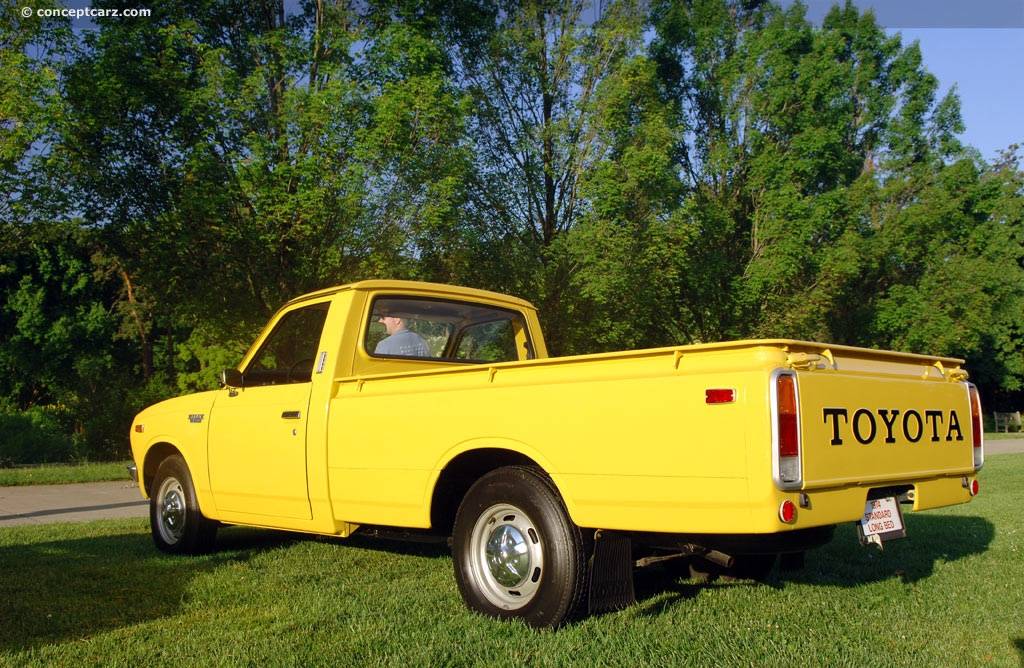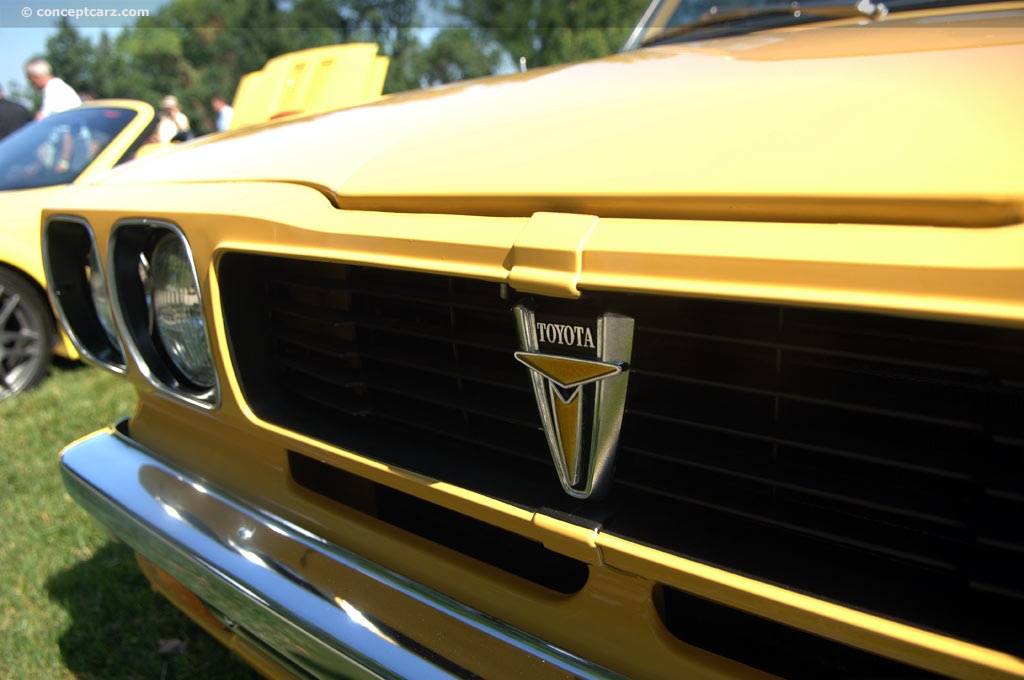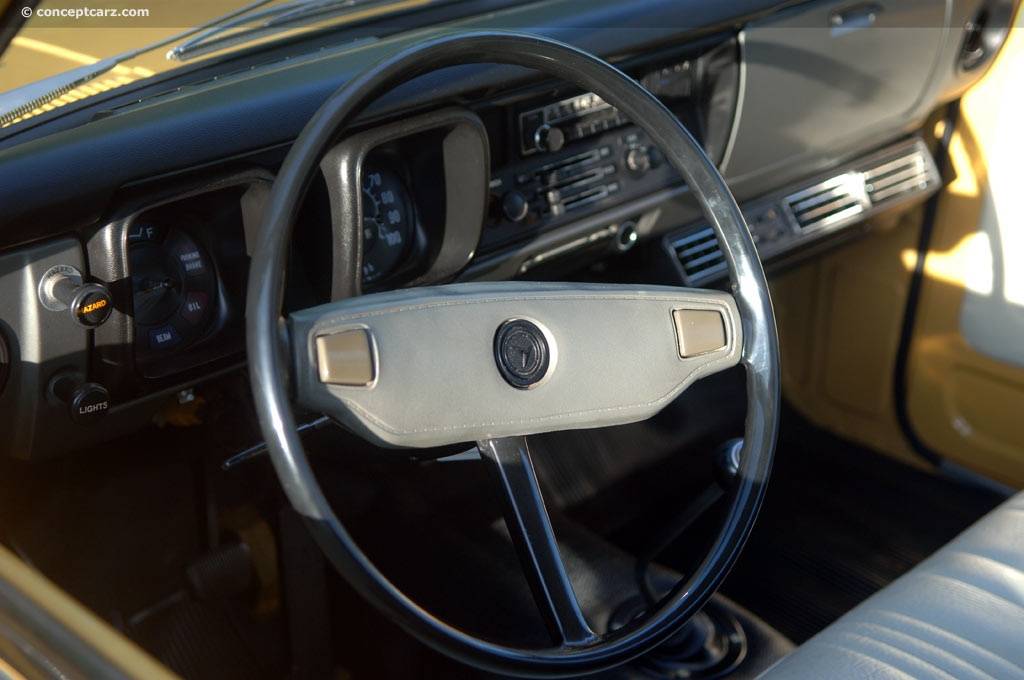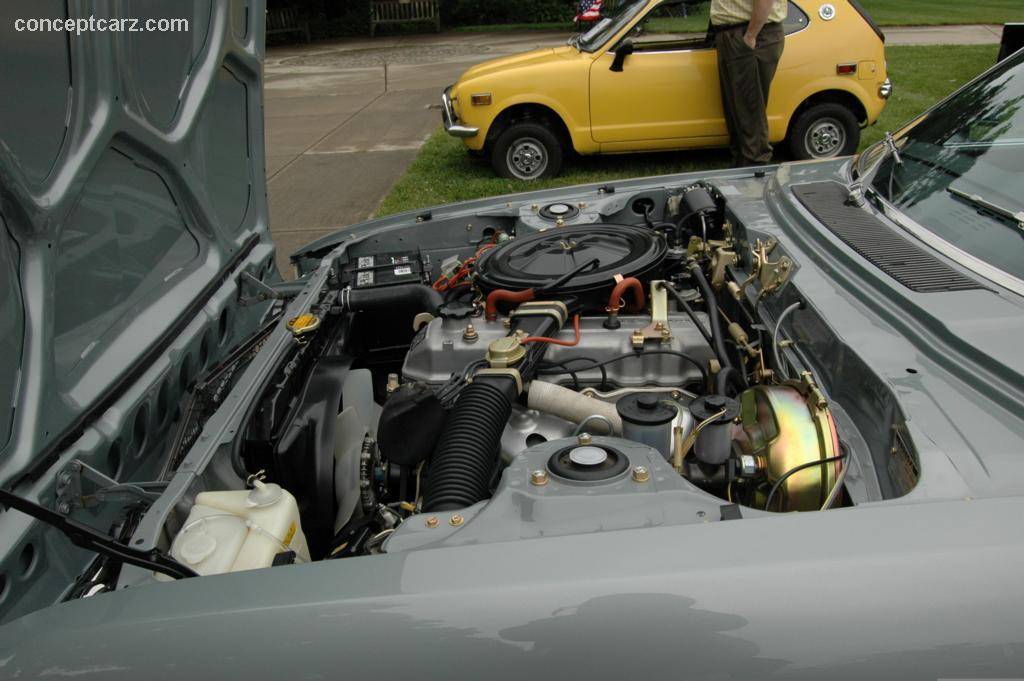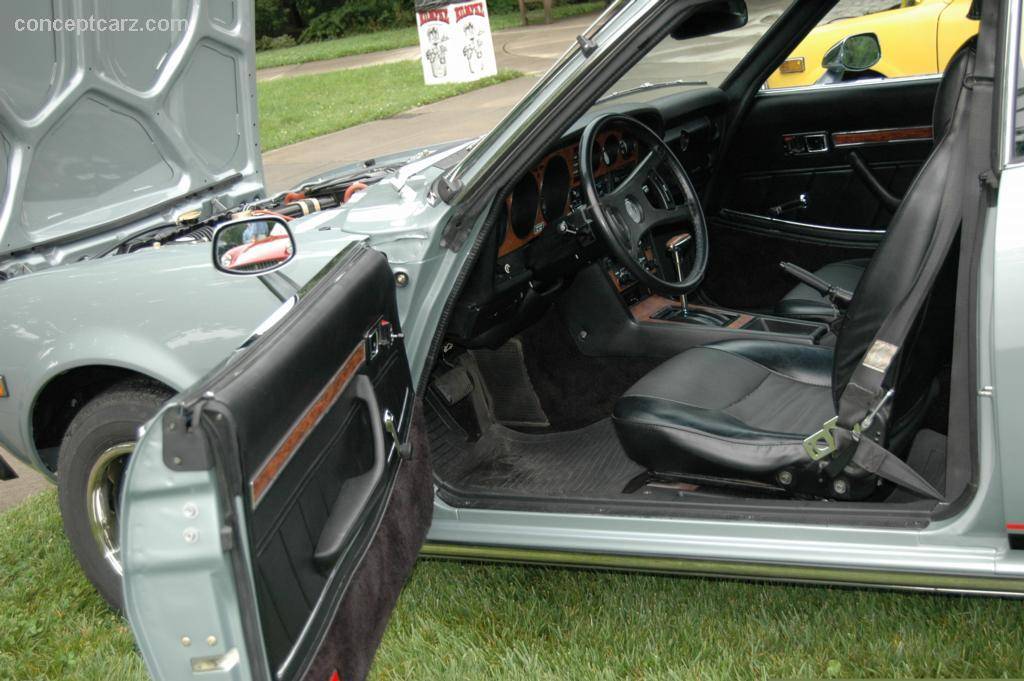September 22, 2010 – 11:59 pm

|
| Toyota Corona PT20 1960-1964 |
Toyota Corona PT20 Specifications :
Manufaturer : Toyota
Production : 1960-1964
Assembly : Toyota City, Japan
Body style(s) : 4-door sedan, 3-door station wagon, 2-door pickup
Layout : FR layout
Engine(s) : 1.0L (997cc
Transmission(s) : 2-speed automatic transmission, 3-speed manual transmission
Wheelbase : 94.5 in (2400 mm)
Length : 157.1 in (3990 mm)
Width : 58.5 in (1486 mm)
Height : 56.5 in (1435 mm)
Curb weight : 980 kg (2,200 lb) sedan
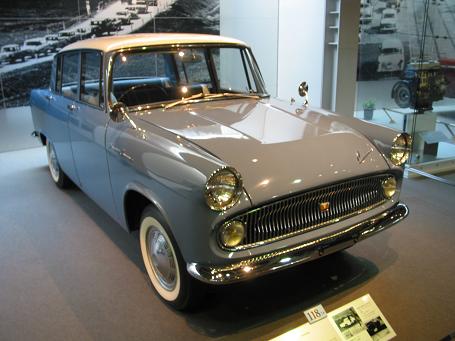
|
| Toyota Corona PT20 1960-1964 |
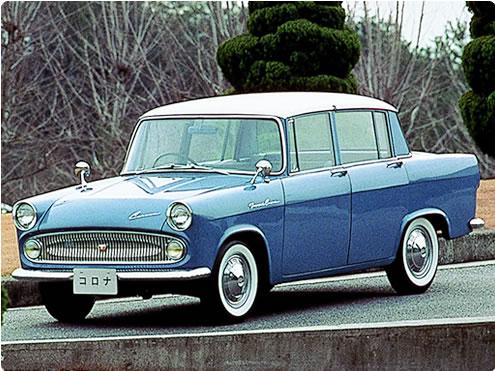
|
| Toyota Corona PT20 1960-1964 |

|
| Toyota Corona PT20 1960-1964 |
Photo Credit : Mytho88 and http://www.toyota.co.jp
October 6, 2010 – 8:13 pm
1974 Toyota Hi-Lux Specifications :
Manufacturer : Toyota
Productions : 1974
Engine : 4WD, 4 cylinders, 1967 cc, 97 HP, Gasoline fuel type, manual transmission.
source : http://www.conceptcarz.com/
January 27, 2011 – 10:42 pm
1977 Toyota Celica GT Specifications :
Manufacturer : Toyota
Productions : 1970-1977
Engine : 4 cylinders, rear wheel, 1967 cc, 97 HP, gasoline fuel type, 4 gears manual transmission.
source : http://www.conceptcarz.com/
 Manufacturer : Alfa Romeo
Manufacturer : Alfa Romeo
 Productions : 1951-1959
Productions : 1951-1959
 Engine : 1,884 cc, 90 bhp, 4 cylinder
Engine : 1,884 cc, 90 bhp, 4 cylinder
 Source : netcarshow.com
Source : netcarshow.com
The Alfa Romeo 1900 was a sports sedan designed by Orazio Satta for the Alfa Romeo company in 1951. It was Alfa Romeo’s first car built entirely on a production line.
The 1900 was offered in two door or four door models, with a 1,884 cc, 90 bhp, 4 cylinder engine. It was spacious and simple, yet quick and sporty. The slogan Alfa used when selling it was “The family car that wins races”, not-so-subtly alluding to the car’s success in the Targa Florio, Stella Alpina, and other competitions. Production continued until 1959, a total of 21,304 were built.
April 15, 2011 – 11:43 pm
1966 Honda RC166 250 Specification :
 Manufacturer : Honda
Manufacturer : Honda
 Productions : 1966
Productions : 1966
 Engine : 250 cc
Engine : 250 cc
However technically interesting and highly developed the Honda RC116 and RC149 may be, the most appealing, the most glamorous racing bike ever built is no doubt the 1966 Honda RC166 six. Although the Italians are known for their creations, Carcano’s masterpiece, the Moto Guzzi V8 500 cc, was a lumpish, ungainly hunk of a motorcycle when compared to the sleek, beautiful lines of the Honda. It’s the comparison between a dray horse and a thoroughbred. In addition to its specifications and beauty came the incomparable, ear-splitting howl of its six megaphones and its invincibility in the hands of Mike Hailwood, which made it a legend in its time.
Although outwardly very like the RC165, internally the engine has been changed and now has a bore and stroke of 41 x 31 mm. See second image at left. Carburetors have cylindrical slides, although sometimes flat slides are used. Power output is 60 bhp at 18,000 rpm. Like the RC149, the bike has oil coolers in the right and left hand side of the fairing. Also new are the brakes, which have now radial cooling fins instead of circumferential ones. Dry weight of the seven speed bike is 112 kg.
August 17, 2010 – 3:04 pm
Vespa MP5 Paperino – 1943 Specification :
Manufacturer : Piaggio
Production : 1964
Engine : air-cooled engine, 2 stroke,
Photo Credit : theworldofmotorcycles.com
August 17, 2010 – 2:53 pm
Description :
Manufacturer : Piaggio
Production : 1947
Engine : air-cooled engine, 2 stroke,
Top speed : 75 km/h
Photo Credit : theworldofmotorcycles.com
 Manufacturer : Ferrari
Manufacturer : Ferrari
 Productions : 1987-1992
Productions : 1987-1992
 Engine : 2.9 L (2936 cc) version of the GTO’s twin IHI turbocharged V8 developing 478 PS (352 kW/471 hp)
Engine : 2.9 L (2936 cc) version of the GTO’s twin IHI turbocharged V8 developing 478 PS (352 kW/471 hp)
 Source : netcarshow.com
Source : netcarshow.com
The Ferrari F40 is a mid-engine, rear-wheel drive, two-door coupé sports car produced by Ferrari from 1987 to 1992 as the successor to the Ferrari 288 GTO. From 1987 to 1989 it held the title as the world’s fastest street-legal production car, and during its years of production, was Ferrari’s fastest, most powerful, and most expensive car. It was intended that there were to be 400 Ferrari F40 made, all painted red, but a total 1,315 F40s were produced.
read more »
1949 Cadillac DeVille Coupe
April 28, 2011 – 12:18 am
 Manufacturer : Cadillac
Manufacturer : Cadillac
 Productions : 1949
Productions : 1949
 Engine : V8 331 in³ (5.4 L) to 472 in³ (7.7 L).
Engine : V8 331 in³ (5.4 L) to 472 in³ (7.7 L).
 Source : netcarshow.com
Source : netcarshow.com
The Coupe deVille, like other Cadillacs, grew substantially larger and more powerful from 1949 through the early 1970s. By 1973 it was 4 in. (101.6 mm) longer in wheelbase, 17 inches (431.8 mm) longer overall, and more than 900 lb (408 kg) heavier, and its standard V8 engine had grown from 331 in³ (5.4 L) to 472 in³ (7.7 L).
The Coupe deVille remained a pillarless hardtop through the 1973 model year, but for 1974 was restyled as a pillared two-door with then-fashionable opera windows behind the side windows. The Sedan deVille remained a pillarless four-door through 1976.
read more »
 Manufacturer : Volkswagen
Manufacturer : Volkswagen
 Productions : 1975-1981
Productions : 1975-1981
 Engine : dohc 50 PS (37 kW) 1.043 cc
Engine : dohc 50 PS (37 kW) 1.043 cc
 Source : netcarshow.com
Source : netcarshow.com
The Mk I Polo, a rebadged version of the Audi 50, was introduced in 1975. The differences between the Audi and VW models were minor, with the Polo being cheaper and much more basic. The two cars were initially sold along side each other, but the Audi 50 never sold as well, and was withdrawn in 1978. The Polo was manufactured at the Volkswagen plant in Wolfsburg. In 1977, the Derby sedan was released, which was simply a Polo, identical to the hatchback from the C-pillar forward, with a large boot attached (an old Audi proposal, but never sold by this brand).
When first on sale the range topping car, the LS model, featured the 50 PS (37 kW) 1043 cc engine found in the Audi 50. Other specifications included parking lights, rear wash wipe, sun visors, chromed bumpers and 4.5J X 13″ wheels. The N model was the basic starting spec lacking many of the features of the LS. In 1979 the GLS was introduced, replacing the LS as the range-topping car; specification upgrades included chrome headlight and grill surrounds, sunroof, a cigarette lighter and chrome wheel trims.
read more »




